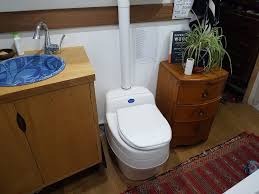Water is one of the planet’s most precious resources. Yet, an astonishing amount of it is wasted in conventional sanitation systems. This is where waterless toilets come in—a revolutionary solution redefining sustainability in waste management.
What are Waterless Toilets?
waterless toilet are restroom systems designed to operate without the use of water for flushing. Instead of relying on traditional plumbing, they utilize innovative technologies to process waste in an environmentally friendly manner. These systems can vary in design and function but often include composting, dehydration, or chemical treatment mechanisms.
Benefits of Waterless Toilets
1. Water Conservation
Traditional toilets use several gallons of water per flush, adding up to thousands of gallons annually. By eliminating the need for water, waterless toilets significantly reduce water consumption, making them ideal for drought-prone regions and areas with limited water supply.
2. Eco-Friendly Solution
Waterless toilets often produce less waste and may convert it into compost, which can be repurposed for agricultural or gardening use. They also help reduce the strain on wastewater treatment facilities, further benefiting the environment.
3. Cost Efficiency
Switching to waterless systems can save money over time. By forgoing the need for plumbing infrastructure and lowering water bills, these systems offer a cost-effective alternative for homes, businesses, and remote locations.
4. Versatile Applications
Waterless toilets are ideal for diverse settings, including rural areas, outdoor recreational sites, and urban communities searching for sustainable living solutions. Their adaptability ensures that they meet the needs of various environments while maintaining efficiency.
A Clean and Responsible Future
Waterless toilets are not just about saving water—they’re about creating a sustainable future. With innovations in design and waste processing, these systems are paving the way for eco-conscious living. By adopting waterless sanitation options, individuals and organizations alike can contribute to responsible resource management while enjoying environmentally friendly conveniences.



